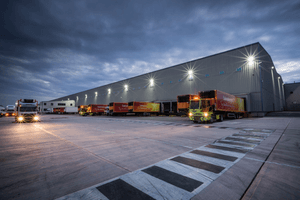This article is from the Australian Property Journal archive
AUSTRALIA’S burgeoning build-to-rent sector has received a $1.5 billion confidence boost from global investor Hines, which has joined forces with investment and development manager Cadillac Fairview and the real estate arm of the Ontario Teachers’ Pension Plan.
They announced the formation of a partnership with the capacity to develop and acquire up to A$1.5 billion of assets in the Australian Build-to-Rent (BTR) sector.
This also isn’t the first time Hines has explored the BTR sector in Australia.
The ultimate aim of the partnership is to develop, own and operate top-class and international-quality BTR resources across the country, to be seeded by three BTR development sites.
Managing director and head of living at Hines Australia, Sam Bisla says the company noticed the potential in the sector and is committed to supporting that.
“Hines and Cadillac Fairview have seen the attractive long-term defensive nature of the asset class through their international portfolios,” Bisla said.
“We have been strategically building a portfolio and are expecting to scale up the BTR portfolio in the short term, and the scale of the partnership shows a huge strategic commitment and belief in the opportunities which BTR presents.”
“Hines has been investing in living assets across Asia for over 25 years, with recent acquisitions including co-living assets in Hong Kong and residential assets in Japan, most recently through its diversified investment fund, Hines Asia Property Partners (HAPP,)” said Chiang Ling Ng, chief investment officer for Asia at Hines.
“Both Hines and Cadillac Fairview recognize Australian BTR as one of the most exciting growth opportunities in Asia,”
Senior VP of investments Asia Pacific at Cadillac Fairview Karl Kreppner elaborates on his company’s interest in the BTR strategy.
“The residential sector is a key area of focus for Cadillac Fairview globally, and we are pleased to be investing in the sector in Australia alongside Hines. This investment aligns with our strategic objective of expanding our investment portfolio in Asia by forming partnerships with best-in-class operators and developers in attractive asset classes, such as residential, office and logistics. It also complements our global residential portfolio, which includes large active pipelines across the U.S., Europe and Canada.” Kreppner said.
The build-to-rent sector has been burgeoning amidst the rental crisis in 2022, with investors capitalising on the surge in demand for available rental properties.
A combination of housing prices and lack of housing supply have been driving more desperation for renters, inspiring more investors to deliver BTR facilities to cater for potential renters’ needs.
Developments in the BTR sector have been gaining momentum in recent months with Greystar commencing construction on a $500m Build-to-Rent project earlier in October as well as acquire a number of sites to boost its development pipeline.
Early last year Greystar raised $1.3 billion to invest in Australia’s BTR market, with backing from Ivanhoé Cambridge, a major European institutional investor and APG Asset Management. Just over 12 months ago, it announced a $500 million project in South Yarra that will be the largest of its type in Australia, and it is also developing another $500 million project at 15-85 Gladstone Street in South Melbourne that will have 700 units.
Australia’s build-to-rent sector is expected to mature into a $9.6 billion market by 2027, and while federal government tax arrangements still present challenges, the Victoria and NSW governments have introduced concessions. Most existing developments either under construction or in planning are in Melbourne.
As well as Greystar, major institutional players and developers active in the market include Mirvac, Investa and Oxford’s Indi, as well as Gurner, Altis and Hines, while US real estate investment and development firm Sentinel and Dutch pension fund manager PGGM have entered into a $1.5 billion partnership to develop and manage communities across Australia.
The national vacancy rate is sitting at its lowest level since 2006, at 0.9%, according to SQM Research, and the National Housing Finance Investment Corporation forecasting a shortfall of 163,400 homes by 2032. Property players say build-to-rent can fill the void left by build-to-sell.







